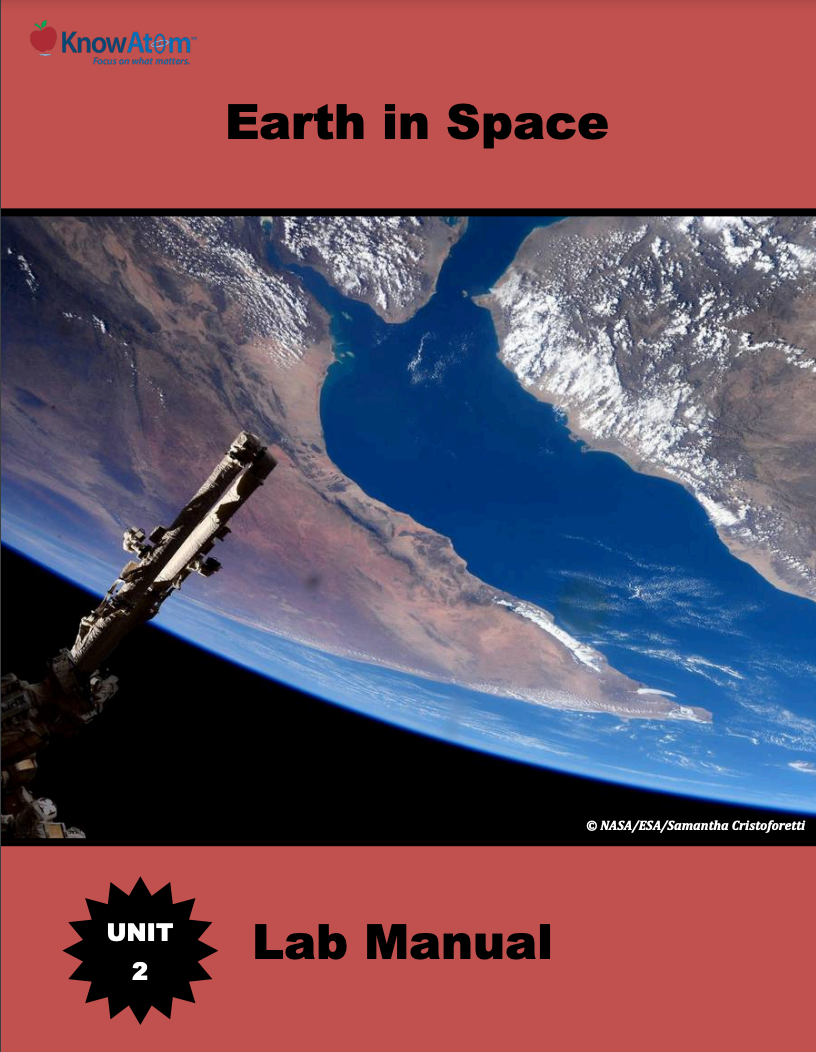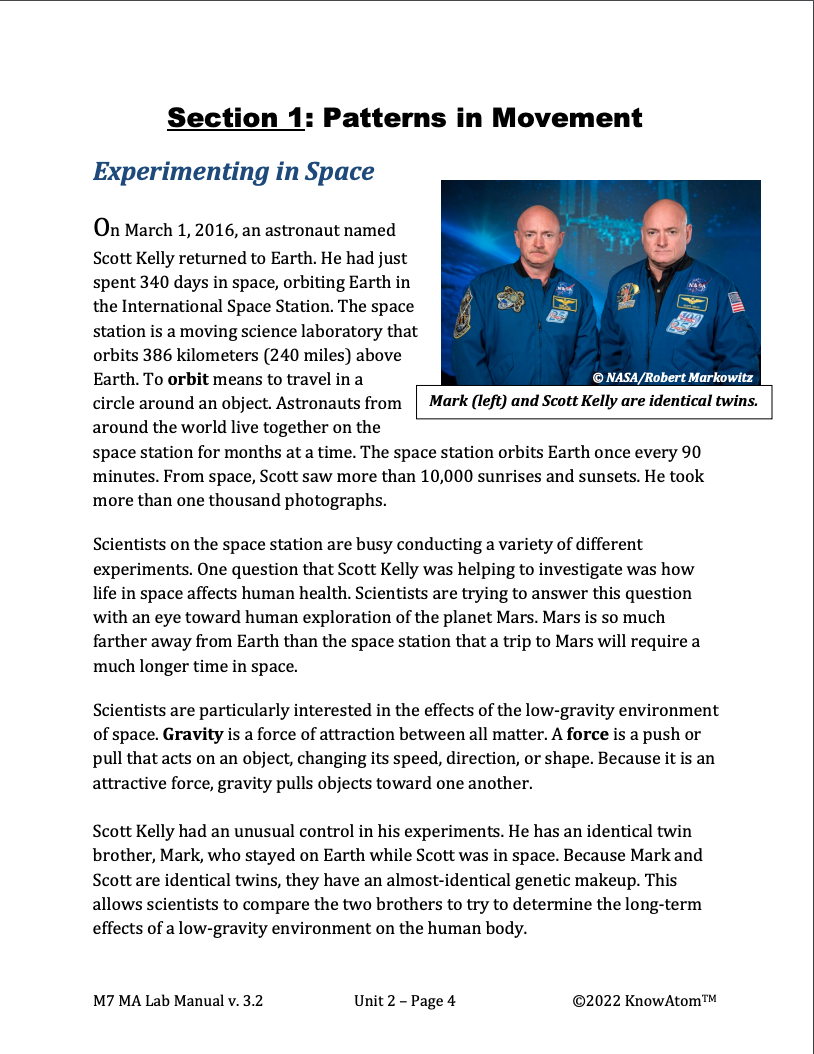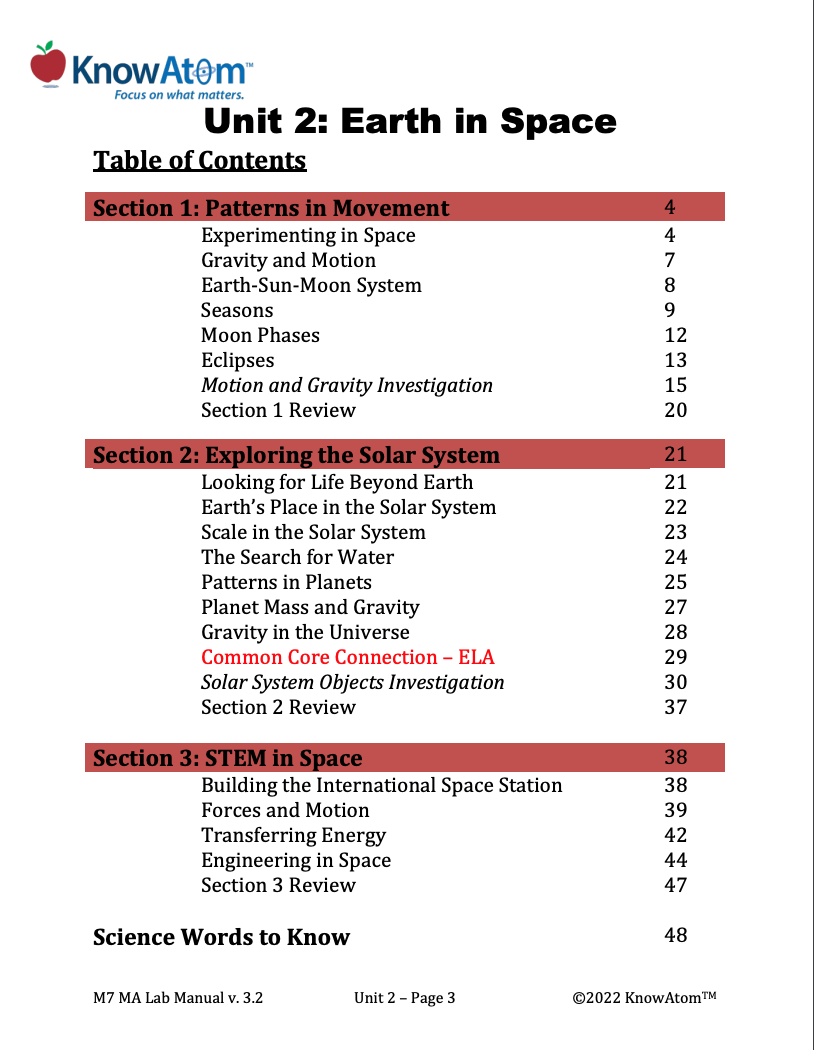Experimenting in Space
On March 1, 2016, an astronaut named Scott Kelly returned to Earth. He had just spent 340 days in space, orbiting Earth in the International Space Station. The space station is a moving science laboratory that orbits 386 kilometers (240 miles) above Earth. To orbit means to travel in a circle around an object. Astronauts from around the world live together on the space station for months at a time. The space station orbits Earth once every 90 minutes. From space, Scott saw more than 10,000 sunrises and sunsets. He took more than one thousand photographs.
Scientists on the space station are busy conducting a variety of different experiments. One question that Scott Kelly was helping to investigate was how life in space affects human health. Scientists are trying to answer this question with an eye toward human exploration of the planet Mars. Mars is so much farther away from Earth than the space station that a trip to Mars will require a much longer time in space.
Scott Kelly had an unusual control in his experiments. He has an identical twin brother, Mark, who stayed on Earth while Scott was in space. Because Mark and Scott are identical twins, they have an almost-identical genetic makeup. This allows scientists to compare the two brothers to try to determine the long-term effects of a low-gravity environment on the human body. Scientists are particularly interested in the effects of the low-gravity environment of space.
Gravity is a force of attraction between all matter. Because it is an attractive force, it pulls objects toward one another. Here on Earth, you always experience the pull of Earth’s gravity. It pulls all objects on or near its surface down toward the planet’s center.
The effects of gravity are different on the International Space Station from how they are on Earth. There is much less gravity on the space station than on Earth. It is because of this low-gravity that astronauts float in space, and why they can lift objects that weigh hundreds of pounds.
Low gravity also affects the muscles of astronauts. On Earth, we have to use our muscles just to stand up against the force of gravity, which is constantly pulling on us. This requires our bodies to maintain enough muscle to support our own weight.
In the low-gravity environment of space, astronauts lose muscle since it is not required to support their weight. To counter this, astronauts have to exercise regularly.
One experiment that Scott Kelly was part of on the space station was investigating how a low-gravity environment affects a person’s muscle mass over an extended period of time. As soon as Scott returned to Earth, he and Mark began a series of tests by different scientists who are looking for differences between the brothers. There isn’t a quick answer to this question. Scientists plan to continue to study the Kelly brothers over time to answer the question of whether there are any long-term effects that don’t show up right away.
The low gravity of the space station occurs because the space station is actually in free fall around Earth. Because of Earth’s gravitational pull, the space station is constantly falling toward Earth's surface, in the same way that a pen you throw up in the air falls back to the ground.
This happens because of two interacting factors: gravity and inertia. Gravity is a result of an object’s mass. All matter has gravity. Dust has gravity. Rocks have gravity. Even people have gravity. Objects don't orbit us, however, because we don’t have enough mass. The more massive an object is, the more its gravity will pull on other objects and cause them to move.
Because gravity is an attractive force, objects don’t need to come into contact with one another to exert a force on each other. Instead, objects have gravitational fields. A gravitational field is the area around one object where another object will feel the gravitational force of the first object. Earth is so much more massive than the space station that its gravitational field extends beyond the space station, pulling it toward Earth’s center.
Gravity exists because matter changes space. Picture Earth as a large bowling ball sitting on a blanket. If a marble (the space station) is placed near the depression the bowling ball (Earth) creates, the marble will move toward it.
This gravitational field causes patterns in movement. Remember that a pattern is something that happens in a regular and repeated way. Every time you release a pen in the air, the pen will fall back to Earth’s surface because the pen is within Earth’s gravitational field.










